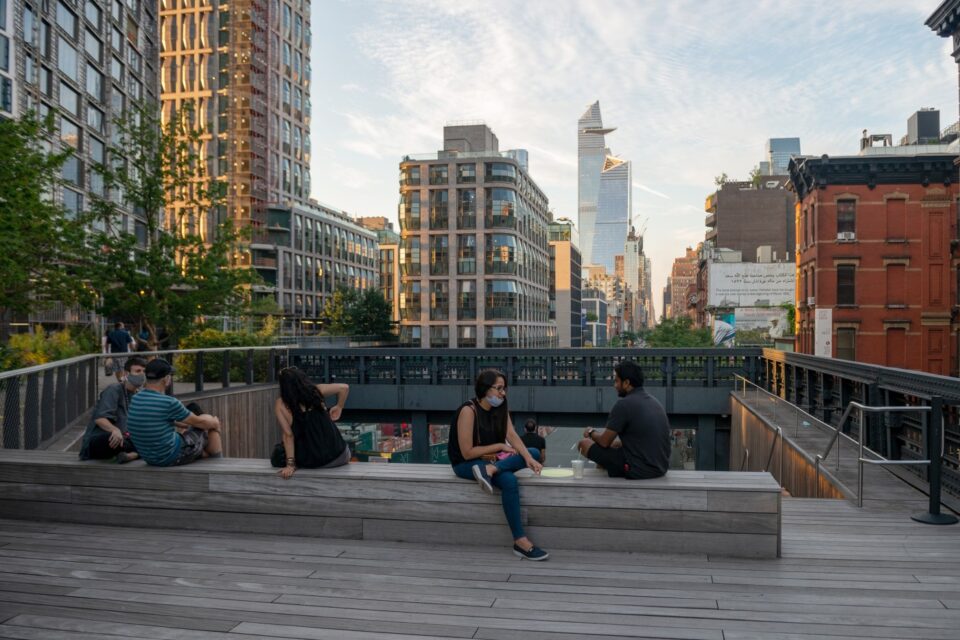
The views from my living room of my first apartment in New York City were of an abandoned elevated railway line covered in garbage and bramble. I worked for a nonprofit and was staying in what was then the General Theological Seminary founded by Clement Clarke Moore and is now The High Line Hotel, a 60-room luxury hotel with a Parisian themed garden on 10th Ave.
My old building has come a long way since the desolate stretch of rail and weeds was transformed into the High Line park, an innovative public space and 1.5 mile greenway with native plants and mesmerizing views that was developed with public input at every step, including an ideas competition to imagine ways the park could be used.
It has become a destination for New Yorkers and visitors alike to enjoy the scenery, art, and food, and has completely transformed the neighborhood. It is now vital to the community that helped determine what it became.
But that may not last. The developer Related Companies and the Wynn Resorts, which was founded by casino magnate Steve Wynn, are determined to build either a casino or a gargantuan convention center in the Western Rail Yards that will materially change and potentially undo the thriving ecosystem that New York has built around a vibrant public space.
Worse, it serves the interests of developers at the expense of city residents who desperately need more affordable housing. This is a story that has played out in many other big cities, and often with disastrous consequences — especially when these decisions are made in boardrooms without the input of the communities they affect.
When you drop a massive, high traffic structure in the middle of an already high density neighborhood in one of the largest cities in the world, the consequences can easily outweigh the benefits.
A convention center, for example, is built for a single purpose. It doesn’t inherently add anything to the surrounding community, or the street-level experience. In-person events have bounced back somewhat since the pandemic but are still at lower levels than before, so demand for conference spaces is lower, and what the city spends on new development may not be offset by revenues for a long time.
A casino would introduce other problems, many of which New York has never had to contend with. We have a robust tourism industry, but no one comes here to gamble, and if they did, their money would be spent gambling, and instead of in local restaurants and stores.
Additionally, most casinos make money from the local populations and with gambling, comes gambling addiction, and what policy makers call “negative externalities,” or side effects that affect the public. These can include increases in crime and lowered productivity. Sports betting in particular has been associated with higher rates of personal bankruptcy, loan defaults, and lower credit scores.
Either of these projects would be detrimental to the High Line, which is one of the most extraordinary public-private parks in the world. It runs in parallel to the Hudson River and gives visitors a unique view of three different West Side neighborhoods — a view that would be partially obstructed by the new developments. For visitors walking the High Line, the northern terminal of the park would be dominated by a structure more at home in Las Vegas than New York.
And all of this is happening in the midst of a housing shortage in New York. The original plans for the development called for a mix of up to 5,700 affordable and market rate apartments, and that has since been shaved down to 1,507 units in the case of a casino and resort, and 2,877 in the case of a conference center.
There are always trade-offs in the negotiations for new developments, but when developers get their way at the expense of local citizens, it makes our cities less livable for people who live there, pay local taxes, and deserve public spaces to enhance their communities.
Potential revenue for a resort company or another big conference center should not be allowed to cannibalize local businesses, disrupt residential neighborhoods, and ruin public projects like the High Line that the city and its residents have invested their time and resources to make a lasting mark on how people live in and experience the urban environment.
The New York skyline will always change but its shape should be determined by the residents of the city itself, not developers with dreams of supertall buildings and tourist revenues.
Ferrari is a real estate investor, broker and filmmaker who lives in SoHo.
